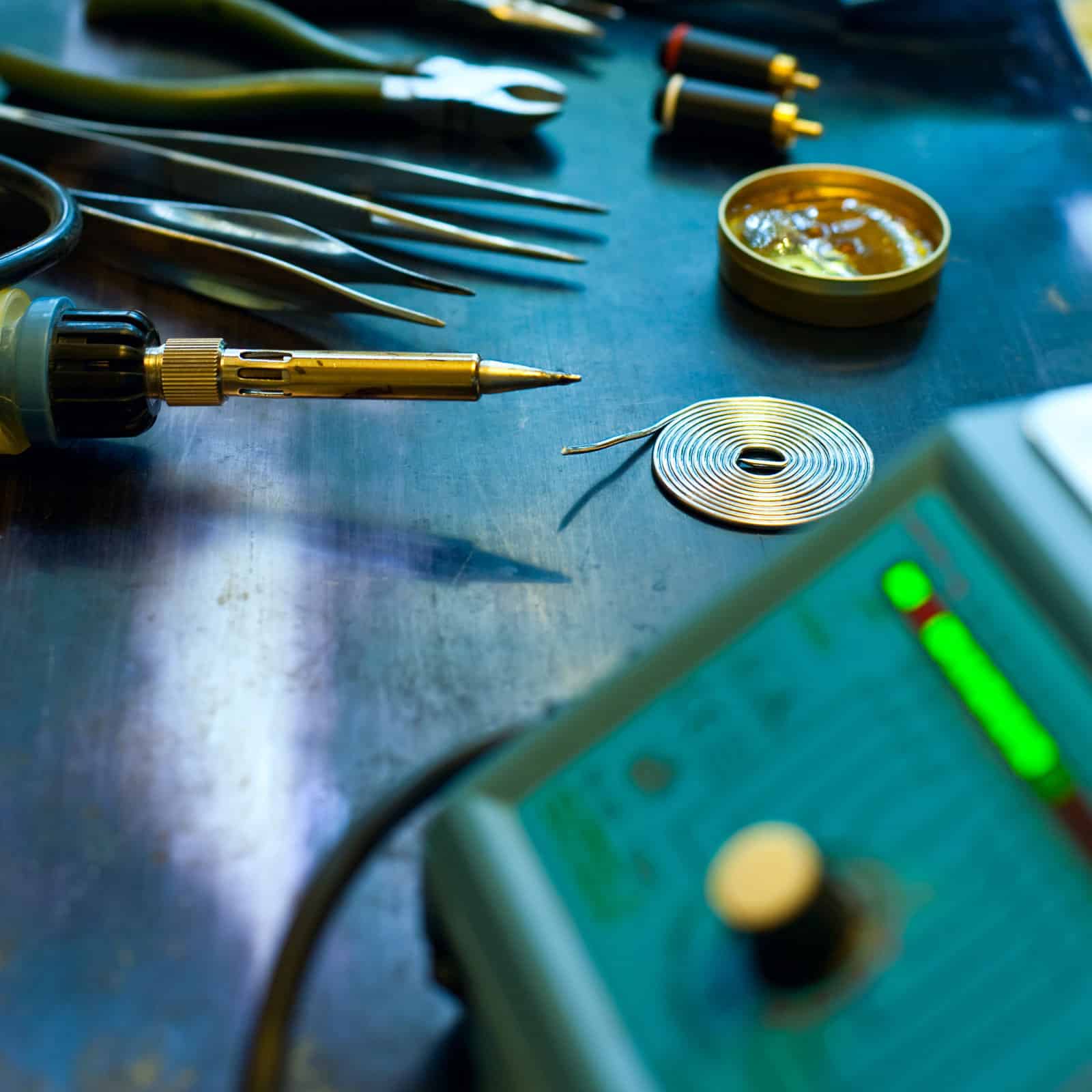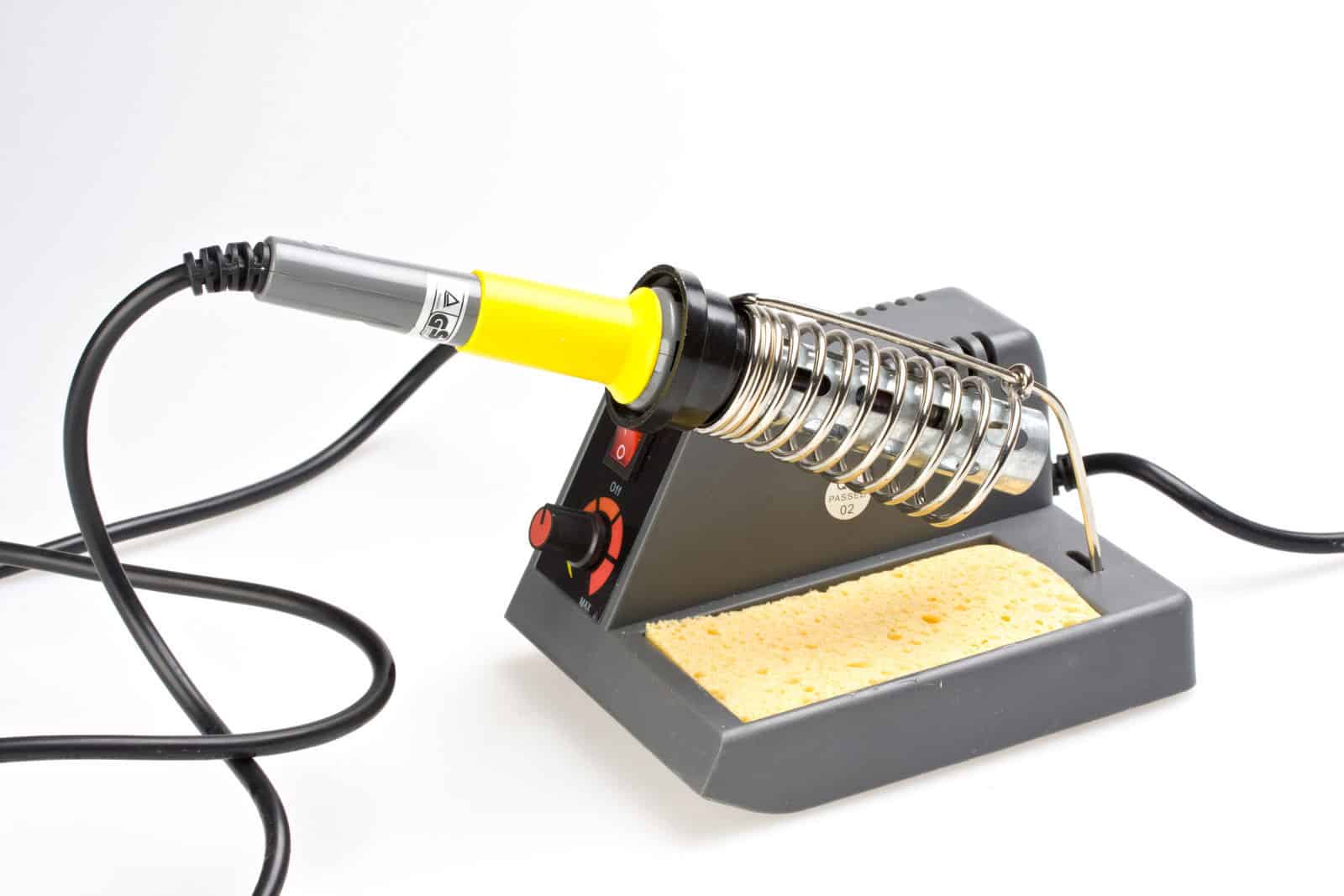You will likely carry out minor circuit repairs or design if you’re an electrical engineer, engineering student, or electrician. And this is where soldering flux comes in handy. But what is flux for soldering, and what does it do?
Soldering flux is helpful when it comes to joining two metals while soldering to achieve a true metallurgic bond.
This is common in PCB assembly and repair, and it ensures that your solder joint doesn’t come loose or crack during use.
But what does flux do in soldering? Interestingly, there is more to flux than just being a liquid for soldering.
Therefore, this article covers every important information you need about soldering flux.
Table of Contents
- What Is Soldering Flux?
- Is Soldering Paste The Same as Flux?
- What Does Flux Do in Soldering?
- When Do You Use Flux When Soldering?
- How Do You Use Flux When Soldering?
- Cleaning Flux From Electronics
- Selecting An Appropriate Soldering Flux
- Alternatives To Commercial Flux
- FAQ
- Conclusion
What Is Soldering Flux?

(A soldering flux)
A soldering flux is a liquid substance that we use when soldering electronics. Its main function is to clear oxidized metal from the circuit’s surface.
It also seals air from getting onto the surface to prevent further oxidation. Furthermore, we use soldering flux to improve the liquid solder’s wetting aspects.
Check out the different types of soldering flux below:
Rosin Flux
Some people refer to Rosin flux as Type R flux. Interestingly, the most basic soldering flux comes from pine tar rosin. And to use it, you must dissolve it as a solvent in isopropyl alcohol.
Additionally, the application of this flux is without additional acid activators.
Rosin is popular since it doesn’t leave behind residue after application, thus reducing corrosion when making an electrical connection.
No-Clean Flux
We get the no-cleaning flux from natural rosin or any other synthetic rosin. Surprisingly, synthetic rosin has additional activators, thus leaving behind residues that cause corrosion.
However, no-clean rosin has a lower natural gum rosin concentration than the Type R fluxes.
Generally, the no-clean flux doesn’t cause corrosion and leaves less residue after application.
Therefore, it’s designed to help assemblers reduce the expense and time needed to clean a PCB board after soldering.
Water soluble Flux
The water-soluble flux is created from water-soluble rosins, thus eliminating the need for more alcohol-based fluxes. They usually form a residue you can flush away by rinsing with water.
Water soluble fluxes use acid activators like organic acids, amides, dibasic organic salts, bromine and chlorine halogenated compounds, and monobasic organic salts.
Such activators are corrosive, and you need to remove them from your circuit board to guarantee reliability and longevity.
Is Soldering Paste The Same as Flux?
Although there are some similarities between soldering paste and soldering flux, the two still have unique properties and compositions.
To begin with, soldering flux is a liquid and contains solvents with rosins, additives, and activators.
Before using a soldering flux, dilute it with water and spray it onto the intended components. Therefore, a soldering flux is a no-clean flux. Moreover, a soldering flux will only have about 25% active ingredients.
However, a soldering paste is a jelly-like substance mixed with solder powder to form a gray paste. Surprisingly, solder paste requires a thorough clean-up.
However, unlike soldering flux, which has up to 25%, the soldering paste will have 60-80% active ingredients. And after mixing the soldering paste, it’ll be about 90% metal.
What Does Flux Do in Soldering?

(Soldering in progress)
Why would you use flux in your soldering project? Generally, flux offers the following benefits:
- Firstly, soldering flux enhances the bonding of joints. Therefore, if you’re soldering or joining two parts together, they’ll bond firmly.
- Secondly, flux cleans the circuit surface before soldering. You’ll find this helpful in areas that are hard to clean, like oxidized metals or parts having oil contamination.
- Thirdly, solder flux enhances the solder’s wetting. Therefore, your solder can flow evenly and wholly over the joint. Consequently, you’ll achieve a reliable and strong connection.
- Finally, flux prevents oxidation. Usually, the formation of oxides weakens surface connections.
When Do You Use Flux When Soldering?
We consider flux to be like the paint primer of the PCB manufacturing process. You need to apply it just before soldering.
After applying it, expect to improve the soldering joints and create strong connections. Additionally, it’ll help you enhance solder flow and reduce oxidation on your circuit.
Generally, flux limits the chances of corrosion or shorts and increases circuit conductivity. Therefore, you should always apply when you want to achieve the above results.
How Do You Use Flux When Soldering?

(A soldering station)
To solder successfully using soldering flux, follow the steps below:
Clean The Surface
Firstly, clean the surface of the circuit board you intend to solder. Although one of the flux functions is to clean the board, removing debris and dirt will be a good starting point. Just use a brush, sandpaper, or piece of cloth clean.
Prepare The Solder Flux
The solder preparation method depends on the flux type you have. For example, with powder flux, you’ll have to mix it with some water to form a paste-like substance. However, not all solder fluxes require preparation.
Apply The Flux To The Surface or Joint
Next, apply flux to your board with a brush, toothpick, cloth, or spatula. Therefore, ensure you use the proper flux amount and that all the surface is fully covered.
Interestingly, applying a lot of flux weakens the solder. Additionally, more flux is needed to offer more protection.
Heat The Surface
Finally, plug your soldering iron into a power source to heat up. Next, place a hot soldering iron on the wire and move it around until you see the flux melting.
Also, ensure it flows into the joint. Remove the soldering iron from the power source and let it cool after creating the solder joint.
Cleaning Flux From Electronics
After you finish soldering, you must remove flux from your electronic components. Therefore, you should understand the flux you use to take the appropriate steps.
- Firstly, rosin-based flux needs chemical solvents having fluorocarbons
- Secondly, you can remove water-soluble flux using deionized water and detergents
- Finally, the no-clean flux doesn’t leave behind much residue. However, we still recommend removing anything unusual to improve the finish and preserve the bond.
Remember, cleaning your circuit board after soldering is in your best interest.
Selecting An Appropriate Soldering Flux
Generally, a flux function is based on halides. Interestingly, if a flux has a high halide content, it performs better by enhancing the joint strengths and removing metal oxides from the surface with ease.
Therefore, when solder your board using flux, consider these two factors:
- The flux should remain inactive before and after the solder
- Moreover, the flux should be active during the soldering process. This way, no oxides will form on the surface.
Furthermore, a good flux should work just below the solder temperature. Therefore, avoid highly active flux since it might cause reliability issues.
The best solder flux should strike a good balance between activity and cleanability.
Alternatives To Commercial Flux

(A young woman using petroleum jelly)
What if you don’t have soldering flux? Is there something else you can use? Well, petroleum jelly is one reliable alternative you can use to break down oxides from the PCB surface.
Surprisingly, petroleum jelly is naturally anti-corrosive and thus won’t damage your PCB.
Additionally, you can use lemon juice and pine tar flux if you don’t have soldering flux and petroleum jelly.
FAQ
Can you use plumbing flux on your electronics?
Plumbing flux has a strong acid that is very corrosive. Therefore, using the flux on electronics will rapidly degrade the wiring.
Can flux damage electronics?
Generally, flux is helpful during the soldering process. However, if you leave behind a flux residue after soldering, your electronics might experience current leakage and failure.
Do you need to remove flux from your electronics after soldering?
Yes! We recommend removing flux from your electronics after soldering. Failure to do so might cause current leakage and failure to your electronics.
Conclusion
By now, you should know that a soldering flux is essential when you’re working on minor circuit repairs or design. Generally, it helps in joining two metals to form a metallurgic bond.
Therefore, finding the best flux is key to having a reliable circuit. And if you don’t have a soldering flux, you can use petroleum jelly, lemon juice, or pine tar flux.
